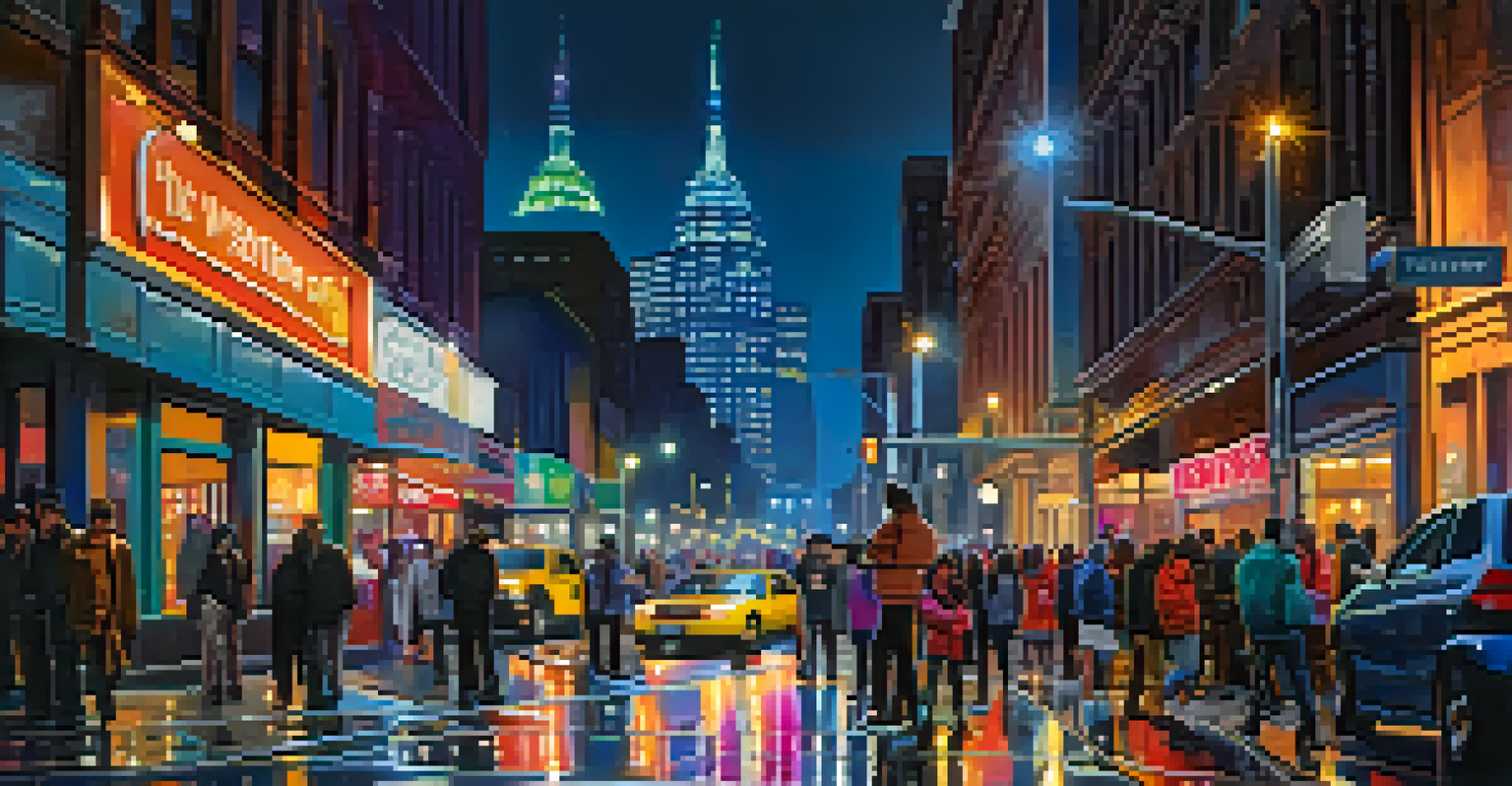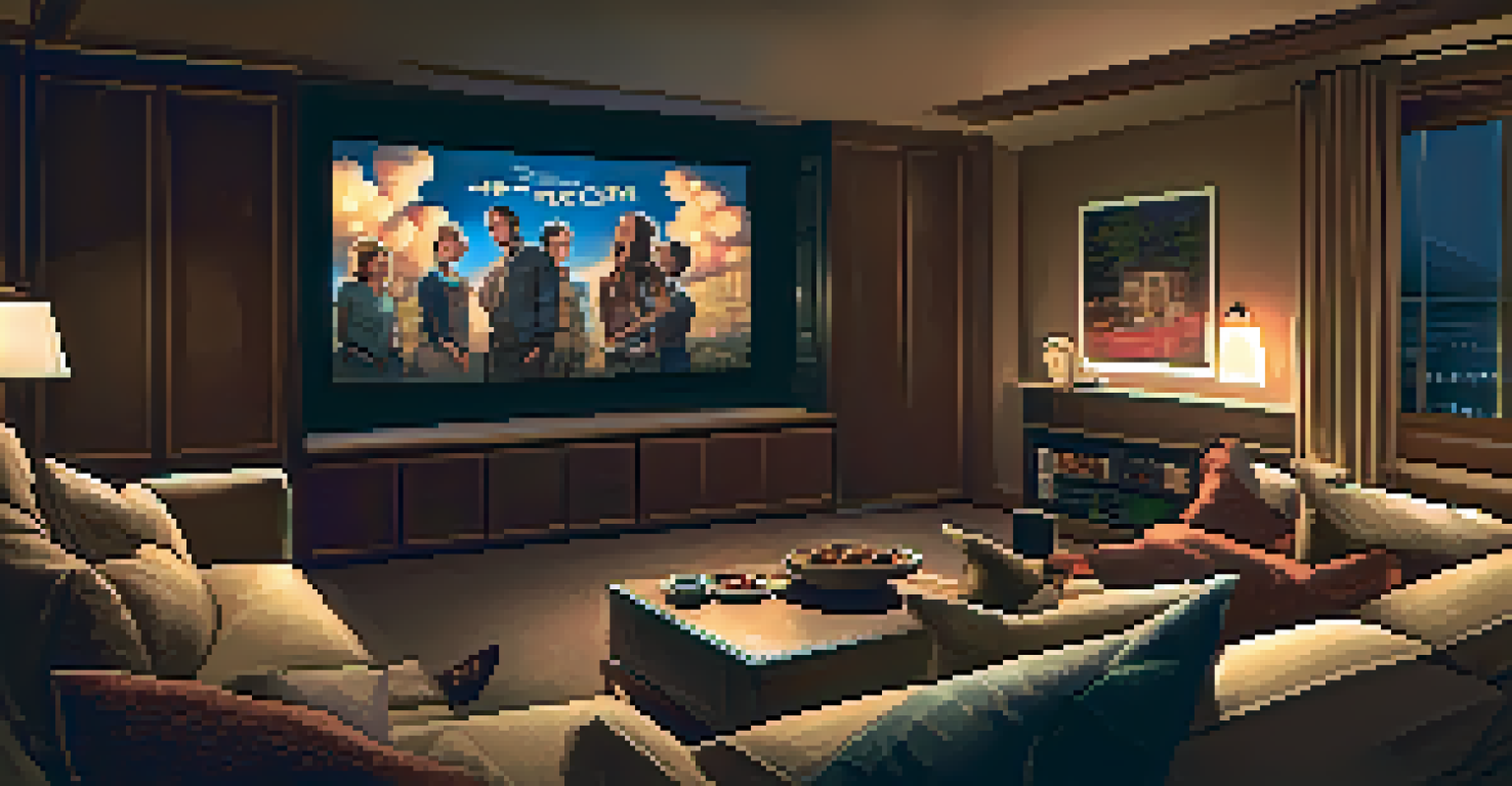The Role of Sound Design in Shaping 21st Century Cinema

Understanding Sound Design: More Than Just Noise
Sound design is often misunderstood as mere background noise, but it's so much more. It involves creating a sonic landscape that enhances the storytelling. Just as a painting uses colors to evoke emotions, sound designers use audio elements to shape the audience's experience.
Sound design is not just about making noise; it's about creating an emotional landscape that enhances the story.
From the subtle rustle of leaves to the booming explosion of a spaceship, every sound is carefully crafted. This attention to detail allows viewers to feel more connected to the narrative. Consider how a suspenseful film builds tension with increasing sound intensity—it’s all part of the craft.
Ultimately, sound design serves as an invisible character in the story, guiding emotions and reactions. In the 21st century, its role has expanded with new technologies, making it an essential element of modern filmmaking.
The Evolution of Sound Design Techniques
Over the years, sound design has seen significant advancements, particularly with digital technology. The transition from analog to digital has opened up a world of possibilities for sound designers. Techniques like Foley, which involves creating sound effects in sync with the film, have been revolutionized.

Today, sound designers can manipulate sounds in ways previously unimaginable. They can layer sounds, adjust frequencies, and even create entirely new audio experiences. This evolution allows for a more immersive cinematic experience that captivates audiences.
Sound Design Enhances Storytelling
Sound design is a vital element that shapes the audience's emotional experience and connection to the narrative.
As technology continues to evolve, so too does sound design. Innovations such as 3D audio and spatial sound are pushing the boundaries, making viewers feel as though they are part of the film rather than just spectators.
The Emotional Impact of Sound in Film
Sound has a profound emotional impact on audiences, often influencing their perception of a scene. For instance, a haunting score can evoke feelings of sadness or fear, while an upbeat tune can create a sense of joy or excitement. These reactions are not just accidental; they are meticulously planned by sound designers.
The power of sound in film is that it can evoke feelings in the audience that visuals alone cannot.
Consider the use of silence in a dramatic moment; it amplifies tension and draws the viewer's attention to the visuals. Conversely, a sudden sound effect can jolt an audience out of their seats, creating a memorable moment. These techniques are vital in crafting the overall emotional journey of a film.
In 21st-century cinema, sound design plays a crucial role in shaping the audience's emotional experience. Filmmakers now recognize that sound is not just an accessory but a core component of storytelling.
Iconic Soundscapes: Examples from Modern Films
Some films have become iconic not just for their visuals but for their unforgettable soundscapes. Take 'Dunkirk,' for example; its use of sound design creates an intense, immersive experience that keeps viewers on the edge of their seats. The ticking clock and the cacophony of war sounds heighten the sense of urgency.
Another notable example is 'A Quiet Place,' where silence becomes a pivotal element of the narrative. The absence of sound forces viewers to engage deeply with the characters' plight, showcasing how powerful silence can be when used effectively.
Technological Advancements Transform Sound
The evolution from analog to digital technologies has revolutionized sound design, allowing for more immersive and creative audio experiences.
These examples highlight how sound design can elevate a film from good to unforgettable. As audiences continue to crave unique experiences, filmmakers are increasingly leaning on innovative sound design to leave a lasting impression.
The Role of Technology in Sound Design Innovation
Technology has played a pivotal role in transforming sound design in cinema. With advancements in software and hardware, sound designers now have access to tools that enable them to create and manipulate sound in real-time. This has led to an explosion of creativity in how sounds are produced and integrated into films.
Digital audio workstations (DAWs) have become essential in the sound design process, allowing for precise editing and layering of sounds. Additionally, virtual reality (VR) has introduced new dimensions to sound design, creating experiences that fully immerse viewers in a three-dimensional auditory landscape.
As technology continues to advance, the possibilities for sound design are endless. Filmmakers and sound designers are constantly exploring new ways to engage audiences, ensuring that sound remains a vital aspect of the cinematic experience.
Collaboration Between Sound Designers and Filmmakers
The relationship between sound designers and filmmakers is crucial for creating a cohesive film experience. Collaboration begins early in the filmmaking process, with sound designers working closely with directors to understand their vision. This partnership fosters creativity, allowing sound to be woven seamlessly into the fabric of the film.
During production, sound designers often attend shoots to capture specific sounds live. This on-location work enables them to craft a more authentic auditory experience that enhances the film's realism. Post-production is where the magic truly happens, as sound designers refine and layer sounds to create the final soundscape.
Collaboration is Key in Filmmaking
The partnership between sound designers and filmmakers is essential for creating a cohesive and engaging film experience.
This collaboration also extends to other departments, such as music composition and editing. By working together, filmmakers and sound designers can ensure that the sound complements the visuals, creating a harmonious blend that captivates audiences.
The Future of Sound Design in Cinema
As we look to the future, sound design will continue to evolve alongside advancements in technology and storytelling. With the rise of streaming platforms, there is a growing demand for high-quality audio experiences, pushing sound designers to innovate further. The integration of immersive sound technologies, like Dolby Atmos, is already changing how films are experienced at home.
Moreover, as filmmakers explore new genres and formats, sound design will play a critical role in shaping these narratives. From interactive storytelling in video games to virtual reality experiences, the boundaries of sound design are expanding.

Ultimately, the future of sound design in cinema is bright. With each new technological advancement, sound designers will be able to craft even more compelling auditory experiences that resonate with audiences, further solidifying the importance of sound in modern filmmaking.